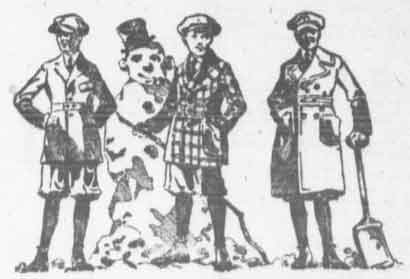
Are you ready to get trashed and party this New Year’s? Do you even know why you are doing it, despite the fact that Frank serves the best beer and all your friends will be there?
Surprisingly, New Year’s Day is steeped in ancient history. Our ancestors celebrated the turning over in many of the same ways we do today. In fact, all of our New Year customs and traditions come from the distant past.

January 1st
Throughout the history of civilization, people have celebrated the New Year on many different dates and during different seasons. The spring equinox was a popular time for the New Year among many ancient civilizations. It has only been in about the last 400 years that different cultures and countries have come together to celebrate the New Year on January 1st.
Out With the Old
The tradition of “out with the old and in with the new” has been celebrated on the New Year since ancient times. Our ancestors would make a point of getting rid of old things on the New Year so that new things, such as better luck and fortune, could take the place of all the bad from the previous year.
Banishing Spirits
The New Year is often brought in with shouts, fireworks, and noisemakers. This is a remnant of the ancient Pagan traditions where horns were blown and other loud noises were made on the changeover to the New Year. The noise, it was believed, helped banish any evil spirits lurking around. It also chased away the ghosts of the past.
Gift Exchange
Gifts were exchanged on New Year’s Day long before the custom became associated with Christmas. In ancient Rome, these gifts were called strenae, from Strenia, the goddess of luck. The gifts were often good luck charms, instead of the commercial presents we buy today. The Persians would give gifts of eggs on the New Year to symbolize fertility and the Druids would gift mistletoe for everlasting life.
The Creek Indians
American Indians celebrated the New Year long before the Europeans invaded their lands. The Creek Indians, also known as the Muscogee, would celebrate the New Year in either July or August, when the corn became ripe. During this harvest time, they would burn their old items, such as grain stored from the previous year and worn out clothing, and replace it with their new supplies. All of the fires were then extinguished and new fires were lit from a singular holy fire that was cared for by their chief priest or shaman.
Emancipation Proclamation
On January 1, 1863, President Lincoln rang in the New Year with the issuance of the Emancipation Proclamation. In this important document, all slaves were freed in the United States.
Feast of the Circumcision
Oh, boy. Of all the things to celebrate, this one must be in the top 10 of most uncomfortable Christian celebrations. The Feast of the Circumcision began in the fourth century by the Eastern Orthodox Church. It is the celebration of the circumcision of Jesus Christ, eight days after his birth.
Work a Little on New Year’s
In ancient Rome, tradesmen would set aside a bit of time to work on their trade or business on this day. The believed that it would set the tone for the rest of the year and bring good fortune and prosperity to their business.
Cattle Protection
The Highlanders used to burn juniper branches near their cattle herds on the first day of the New Year. Then, on the first Monday, they would sprinkle the cattle with urine. All of this was done to protect their herds for the coming year and to drive out any evil spirits that might be troubling the cattle.
Pin Money
An English New Year’s custom was for husbands to gift their wives with pins. Later, the custom turned to giving the ladies a bit of money to buy their own pins. The money was called “pin money”. The same was true of gloves. Gifts of gloves were also common, but for the man who didn’t have the time to shop, he would gift his lady some glove money so that she could go out and buy her own.
Sources:
Brand, J., & Ellis, H. (1849). Observations on the popular antiquities of Great Britain : Chiefly illustrating the origin of our vulgar and provincial customs, ceremonies, and superstitions (A new ed.). London: Bohn.
Myers, R., & Cards, I. (1972). Celebrations: The complete book of American holidays. Garden City, N.Y.: Doubleday.

